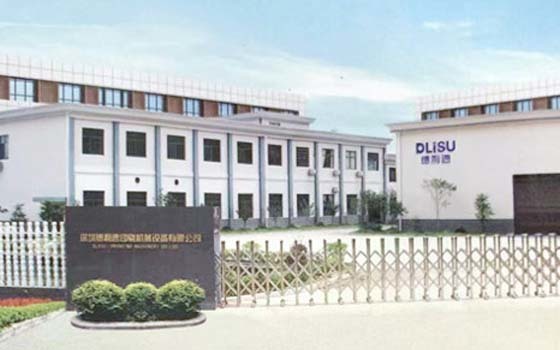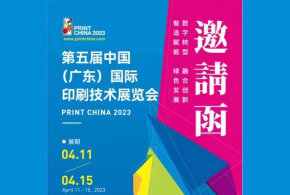
Working principle of flat screen curved screen printing machine
Time:
2021-09-15
Flat screen surface screen printing refers to screen printing with flat screen on cylindrical or conical surfaces. Under certain conditions, it can also screen the oval, drum, arc and other surfaces. Dry screen curved surface screen printing machine is a machine that uses flat screen to print the above curved surface. Working principle of flat surface screen printing machine: a - roller support b - shaft support c - inlaid support. During printing, the flat screen plate and the substrate move while the ink scraper is stationary. The flat screen printing plate is clamped on the screen frame, and the flat screen curved screen printing machine moves at a constant speed. Because of the friction of the screen plate, the substrate placed on the supporting device rotates accordingly. The linear speed of the curved substrate at the embossing line is consistent with the moving speed of the plane screen printing plate to achieve ink scraping printing. In theory, the embossing line should be located at the highest bus of the curved substrate to increase the off screen angle and ensure the printing quality. For the convenience of adjustment, the doctor blade generally adopts a top angle of 60 °± 15 °, and it is required to adjust the verticality and upper and lower dimensions. The adjustment to vertical is to ensure that the cutting edge line will not produce lateral displacement when adjusting up and down, and it is always aligned with the highest bus A; The ink scraper with a top angle of 60 °± 15 ° is used to ensure the obliquity of the ink scraper after vertical installation α。 In the actual adjustment, in order to ensure that the flat screen printing plate and the curved substrate are separated in time, the embossing line can be slightly forward. Especially when the diameter of the substrate is large, the embossing line must be slightly forward. The supporting device for curved surface printing is a special device of various forms, which is designed and manufactured by the user according to the product requirements. Two pairs of roller supports can be used for curved surface printing of cylindrical or conical containers. Shaft sleeve supports can be used for covers and cups with the ratio of length to diameter less than 1.5. Flexible hollow containers can be supported by inflation devices. The elliptical surface is approximately a part of the cylindrical surface, which can be supported by the cylinder inlay method. The principle of printing on the surface of a cone is basically the same as that of printing on the surface of a cylinder. The difference is the graphic shape of the screen plate and the motion form of the screen plate. When making the screen printing plate for the cone surface printing, first draw the development diagram of the cone surface, find out the center of the sector according to the development diagram, and then select the appropriate screen frame to make the screen printing plate. On a plate that can completely contain a sector, a printing plate corresponding to the sector is made. Fix the right angle bar on the plate, and install the shaft into a plate that can be sector rotated. Then, just like the surface printing of the cylinder, four rollers are used to support the substrate under the plate, and the scraper is fixed. Move the plate frame according to the sector shape, and the scraper can be pressurized to print the surface of the conical plate. When printing, the conical bearing printing is in linear contact with the screen printing plate under a certain scraper pressure; When the screen printing plate is horizontally fan-shaped moved around the axis of the fan-shaped development diagram, the substrate rotates synchronously on the support device; The printing ink is squeezed by the scraper, and it skips to the surface of the substrate to complete the printing.
Working principle of flat surface screen printing machine: a - roller support b - shaft support c - inlaid support. During printing, the flat screen plate and the substrate move while the ink scraper is stationary. The flat screen printing plate is clamped on the screen frame, and the flat screen curved screen printing machine moves at a constant speed. Because of the friction of the screen plate, the substrate placed on the supporting device rotates accordingly. The linear speed of the curved substrate at the embossing line is consistent with the moving speed of the plane screen printing plate to achieve ink scraping printing.
In theory, the embossing line should be located at the highest bus of the curved substrate to increase the off screen angle and ensure the printing quality. For the convenience of adjustment, the doctor blade generally adopts a top angle of 60 °± 15 °, and it is required to adjust the verticality and upper and lower dimensions. The adjustment to vertical is to ensure that the cutting edge line will not produce lateral displacement when adjusting up and down, and it is always aligned with the highest bus A; The ink scraper with a top angle of 60 °± 15 ° is used to ensure the obliquity of the ink scraper after vertical installation α。 In the actual adjustment, in order to ensure that the flat screen printing plate and the curved substrate are separated in time, the embossing line can be slightly forward. Especially when the diameter of the substrate is large, the embossing line must be slightly forward. The supporting device for curved surface printing is a special device of various forms, which is designed and manufactured by the user according to the product requirements.
Two pairs of roller supports can be used for curved surface printing of cylindrical or conical containers. Shaft sleeve supports can be used for covers and cups with the ratio of length to diameter less than 1.5. Flexible hollow containers can be supported by inflation devices. The elliptical surface is approximately a part of the cylindrical surface, which can be supported by the cylinder inlay method.
The principle of printing on the surface of a cone is basically the same as that of printing on the surface of a cylinder. The difference is the graphic shape of the screen plate and the motion form of the screen plate. When making the screen printing plate for the cone surface printing, first draw the development diagram of the cone surface, find out the center of the sector according to the development diagram, and then select the appropriate screen frame to make the screen printing plate.
On a plate that can completely contain a sector, a printing plate corresponding to the sector is made. Fix the right angle bar on the plate, and install the shaft into a plate that can be sector rotated. Then, just like the surface printing of the cylinder, four rollers are used to support the substrate under the plate, and the scraper is fixed. Move the plate frame according to the sector shape, and the scraper can be pressurized to print the surface of the conical plate. When printing, the conical bearing printing is in linear contact with the screen printing plate under a certain scraper pressure; When the screen printing plate is horizontally fan-shaped moved around the axis of the fan-shaped development diagram, the substrate rotates synchronously on the support device; The printing ink is squeezed by the scraper, and it skips to the surface of the substrate to complete the printing.
Website

Shenzhen Dlisu Printing Machinery Co., Ltd.
Shenzhen Address: 803, Shenbao Building, No. 219, Zhenming Road, Gongming Street, Guangming New District, Shenzhen
Shantou Address: Wanji Industrial Zone (Second Branch Road), Longhu District, Shantou City
Tel: 86-754-87224116
Phone: 86-137-5047-4043
86-138-2327-5809 86-159-1664-0313
Fax: 86-754-87224116
QQ: 815887412
E-Mail:dlisu888@163.com











